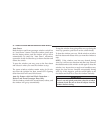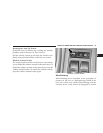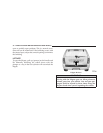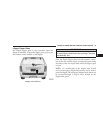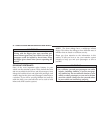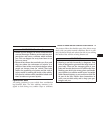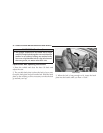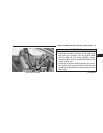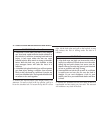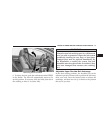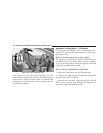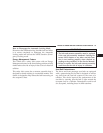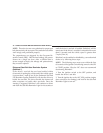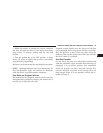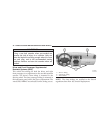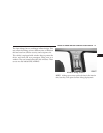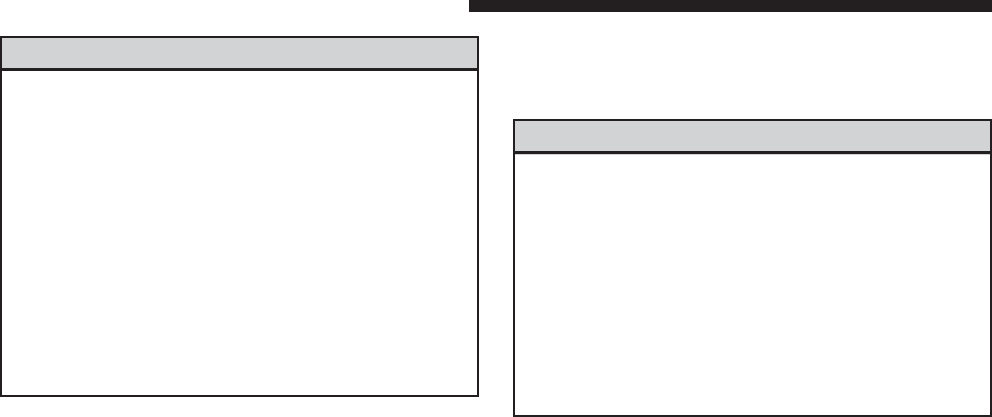
WARNING! (Continued)
•
A belt that is worn under your arm is very danger-
ous. Your body could strike the inside surfaces of
the vehicle in a collision, increasing head and neck
injury. A belt worn under the arm can cause
internal injuries. Ribs aren’t as strong as shoulder
bones. Wear the belt over your shoulder so that
your strongest bones will take the force in a
collision.
•
A shoulder belt placed behind you will not protect
you from injury during a collision. You are more
likely to hit your head in a collision if you do not
wear your shoulder belt. The lap and shoulder belt
are meant to be used together.
4. Position the lap belt across your thighs, below your
abdomen. To remove slack in the lap portion, pull up a
bit on the shoulder belt. To loosen the lap belt if it is too
tight, tilt the latch plate and pull on the lap belt. A snug
belt reduces the risk of sliding under the belt in a
collision.
WARNING!
•
A lap belt worn too high can increase the risk of
injury in a collision. The belt forces won’t be at the
strong hip and pelvic bones, but across your ab-
domen. Always wear the lap part of your seat belt
as low as possible and keep it snug.
•
A twisted belt can’t do its job as well. In a collision
it could even cut into you. Be sure the belt is
straight. If you can’t straighten a belt in your
vehicle, take it to your authorized dealer and have
it fixed.
5. Position the shoulder belt on your chest so that it is
comfortable and not resting on your neck. The retractor
will withdraw any slack in the belt.
40 THINGS TO KNOW BEFORE STARTING YOUR VEHICLE



